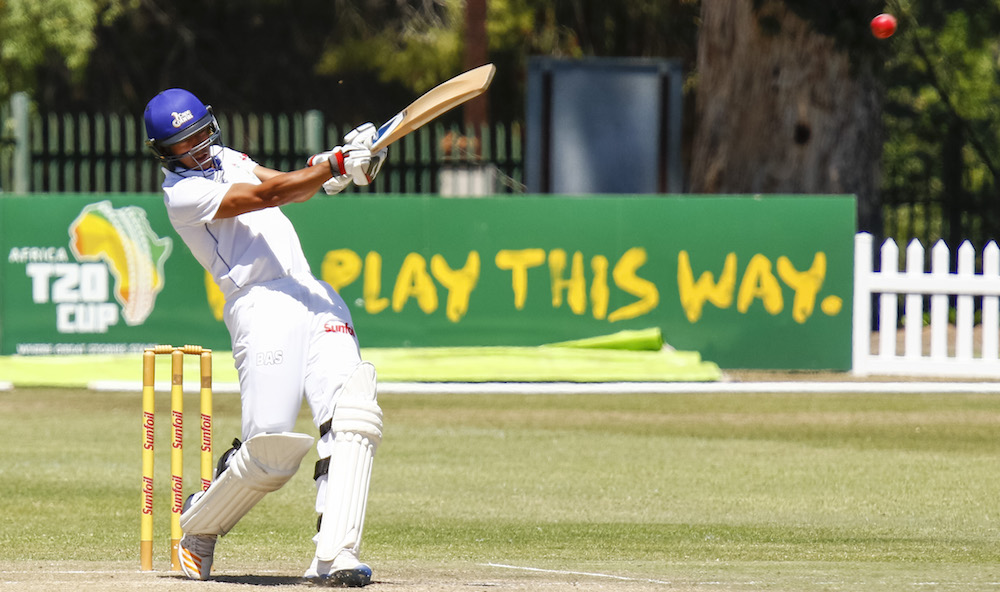Zubayr Hamza is working hard to become the best version of himself he can be.
You enjoyed a great domestic season in 2017-18 that saw you step-up from provincial cricket to the Cobras in a more permanent role. What did you do differently to last season?
Last season was tough. It challenged my self-belief and self-confidence to play at the next level. After a string of early bad performances, that self-doubt crept in and it became a downhill negative spiral. In the off-season, I had to work on building up that self-belief without playing any matches. I tried to formulate self-confidence without putting in performances so that, by the time this season came, I was mentally and physically prepared to hit the ground running when given the opportunity.
What did you do in the off-season to ensure you would find better form in 2017-18?
In the early part of the season I chatted a lot to the coaches, and what I appreciated about the Cobras’ coaching structures is that they are very honest with us. Coach Ashwell Prince told me that I have to wait my turn for an opening in the side because places were so limited. I put in a solid pre-season with regards to gym and fitness work and the coach helped me a lot with changing small things in my technique.
Was there anything you struggled with that you had to work at extra hard?
My consistency – I had to meet the demands of putting in the work over a long period of time. I brought a bulldog, never-back-down attitude to my approach to the game, and that helped me to clear my mind.
In your last match, against the Lions on 22 March 2018, you scored 57 and 121. This took you to two centuries in the month, after your 109 against the Dolphins. Talk us through that golden period.
I did well leading up to the Dolphins game, but the team still came up short. We had to chase about 270 on the last day and let it slip in the morning session. For me, it was about producing a performance when the team needed it most. The experience that Stiaan van Zyl brought to the middle that day was inspiring. It was my first win in my 11th four-day game for the Cobras. After this, I got the call-up for South Africa A to play against Australia, but I had to focus on the task at hand, which was the domestic season. Against the Dolphins we lost wickets quickly on the first day and, n that innings, I threw my wicket away, but I kept challenging myself mentally and managed to score a ton in the second innings. We lost by nine wickets, but I was happy to contribute to the team again.
Your performance in the Sunfoil Series – 828 runs in 14 innings, at an average of 69 – won you Player of the Year at the Cobras Awards. How did that feel?
I was extremely proud of myself. It was a massive achievement for me, so it was a real feather in the hat following on from what I had experienced the year before at domestic level. If someone told me at the beginning of the season that I would have scored 500 runs at an average of 30 I would have taken it. In saying that, it comes with a lot of responsibility and it’s all about me backing it up. You can’t perform one season and expect higher honours. I have to put the numbers on the board and perform season in and season out if I can hope to achieve higher goals.
Your form also landed you a nomination for domestic Player of the Year at the CSA Awards. How did that feel?
I was in India for the spin camp and I had just arrived back to the hotel and my roommate, George Linde, congratulated me and showed me a picture of the nominees on his phone. It was a pleasant surprise to be included as a nominee along with players of that calibre. It was a great experience to mingle with cricketers with so much experience and who have achieved so much.
You had the opportunity to play for SA A against Australia before their series against the Proteas. What did you learn from that experience?
The difference between the international level and the domestic level is that there is no outlet as everyone has a lot to offer. The intensity was much higher, but I had the attitude of playing the ball not the man and enjoyed the experience. I put no pressure on myself leading into the game, but it was a real eye-opener for me to gauge the level and standard at which I’m currently playing.
How far do you think you are from being able to compete on the international stage?
Most people would say that they need a certain number of years, or that they are ‘this far’ or ‘that far’ away from the top level. It is something I spoke to many people about – Ashwell Prince, Shukri Conrad and my father – and the one thing they all said in common is that ‘you are never as far as you think you are.’ As I say, all in God’s time. When it’s my time ‘Insha-Allah’ (God-willing) I will be prepared and ready for it.
What was it like to face the likes of Pat Cummins, Mitchell Starc and Josh Hazlewood in that match?
I was definitely nervous, especially after being asked to open. I faced my fair share of short-pitched bowling, and Cummins and Starc had a lot of pace and skill. Josh kept challenging my defence and he was the most difficult to face – and he got me out in both innings. The way they kept challenging the batsmen showed the level of intensity at which they play. Facing Nathan Lyon, one of the best spinners in the world was also a great experience.
How did they compare to fast-bowlers on our domestic circuit?
Domestically I think there are definitely bowlers who are able to play at the higher level. In terms of raw pace and skills, I believe that it’s all on offer in South African cricket. I wouldn’t say that the margins are huge, although there is just not as much quality per side compared to an international team which is packed with the best. Our Proteas pace bowlers are definitely on par with – and some are better than – the Australian quicks.
You were then selected as part of the squad to travel to India on the spin camp. What did you learn from the experience?
We were in Mumbai for a week and were given the chance to learn from coaches such as Russell Domingo, Claude Henderson and Neil McKenzie. There were also batting coaches, a spinning coach and a wicket-keeping coach, all from India. We worked hard in the heat in the sub-continental conditions and also learned a lot about the local culture and people.
With a new domestic season approaching, how do you plan to maintain your form?
I’m going to stick to the basics and keep things simple and I don’t think anything will change in terms of preparation or with my technique. Perhaps the quantity of preparation will increase, but the quality must stay the same. Mentally I will challenge myself to continuously improve and adapt and I will aim to become a more rounded batsman. There’s a lot in my game that I still have to work on but, as long as I am fit – mentally and physically – then I will be ready. All I have to do is be consistent.
– This article first appeared in the July-Sept 2018 issue of SA Cricket magazine.
Photo: Michael Sheehan/Gallo Images








